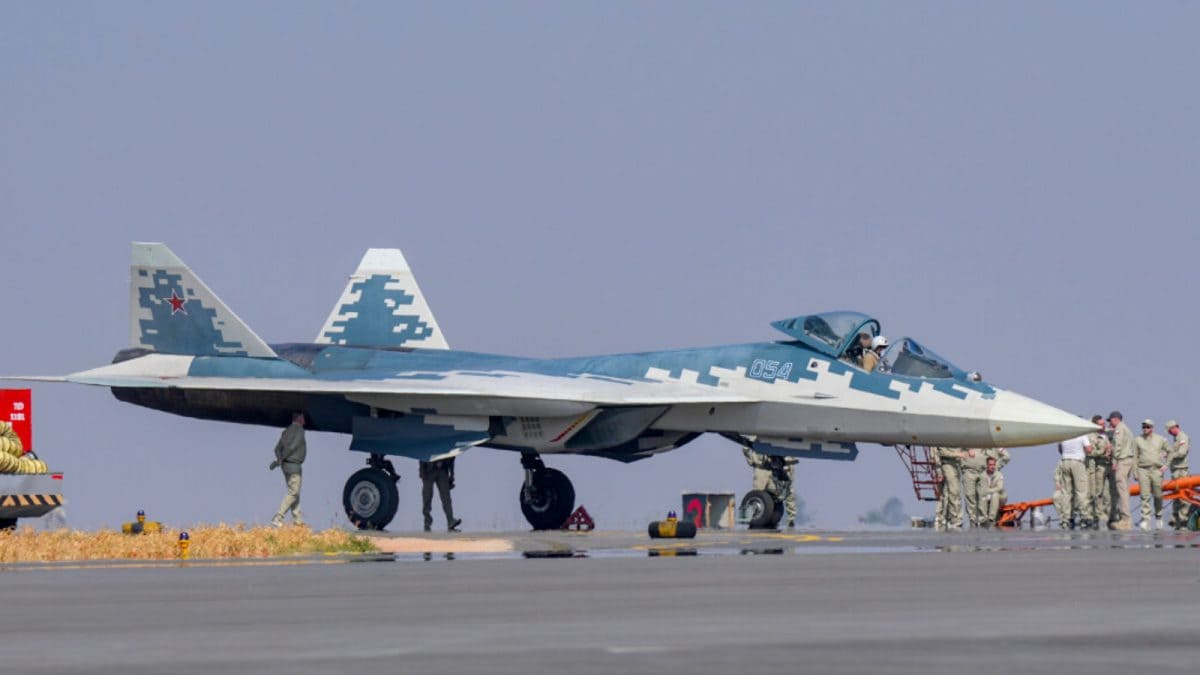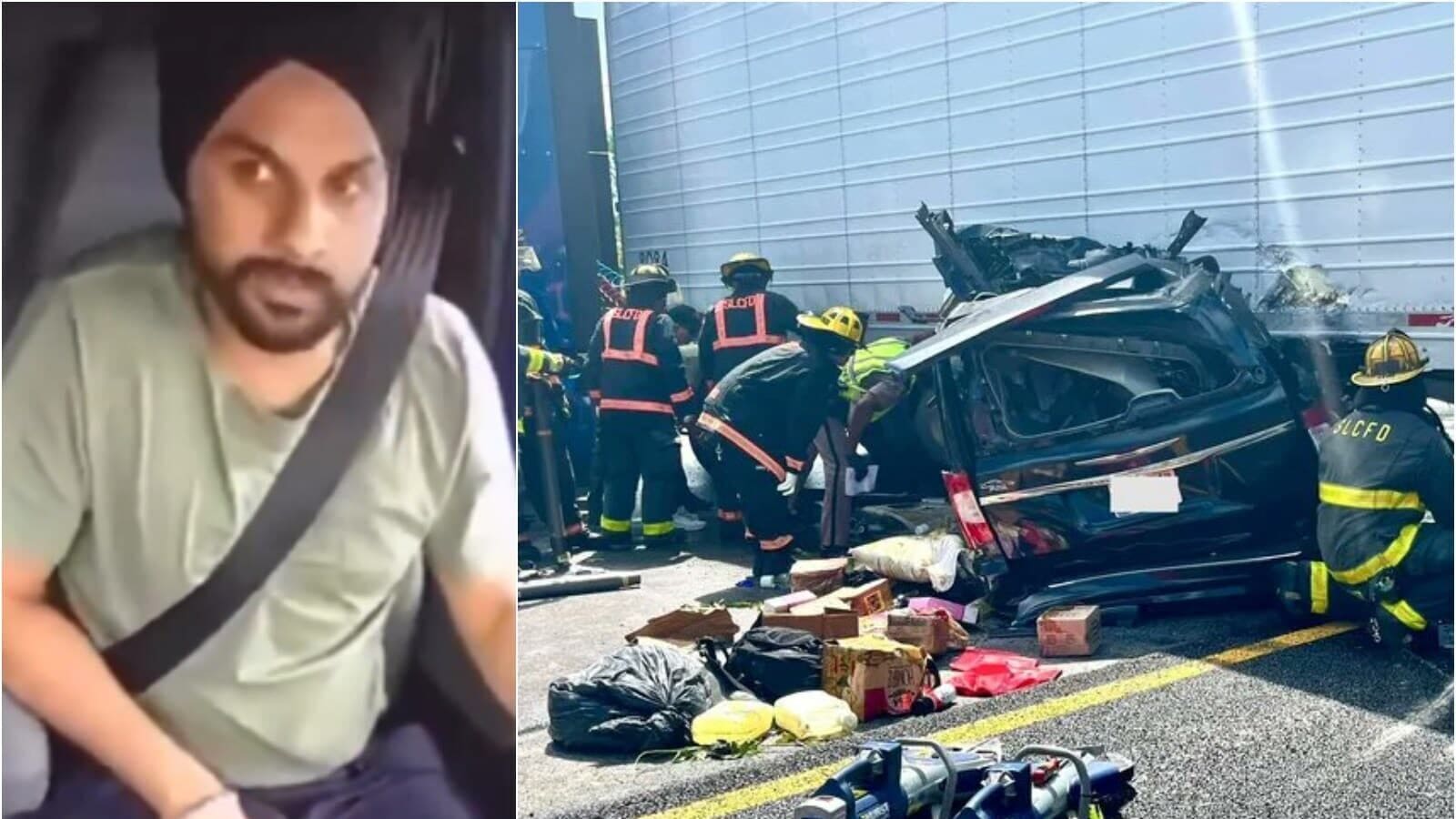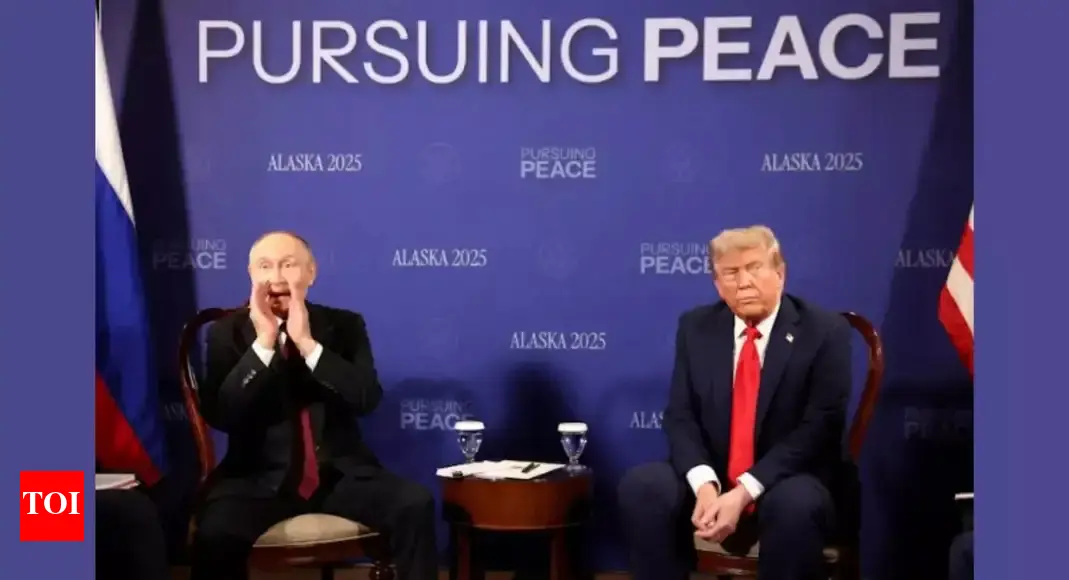Last Updated:
Russia Sukhoi Fighter Jet: At Aero India 2025, Russia proposed a “golden deal” offering early deliveries of the Sukhoi Su-57E, under ‘Make in India’ initiative.

Russian commentators had proposed an India-specific Su-57MKI variant outfitted with powerful long-range missiles. (PTI Photo)
Russia Sukhoi Fighter Jet: Russia’s ambition to position its fifth-generation stealth fighter, the Sukhoi Su-57E, as a formidable player in the global defence market continues to face headwinds. Despite the country’s ongoing efforts to market the aircraft to strategic partners like India, Malaysia, and Algeria, the aircraft’s journey toward export success remains uncertain.
At the recently concluded Langkawi International Maritime and Aerospace Exhibition (LIMA 2025) in Malaysia, the spotlight was expected to fall on the Sukhoi Su-57E. Rosoboronexport, Russia’s state arms exporter, had announced with some fanfare that the aircraft would be showcased at the event. However, as images from the exhibition began circulating, observers noticed something missing: the jet itself. Only a scale model was displayed at the United Aircraft Corporation (UAC) pavilion; no actual Sukhoi Su-57E made it to the airshow.
The absence has once again brought the spotlight back onto the broader question: Is Russia’s most advanced fighter jet ready for the global stage, or is it still in search of a solid takeoff point?
The Sukhoi Su-57E is the export variant of the Sukhoi Su-57, Russia’s answer to fifth-generation platforms like the American F-22 and F-35. Engineered for stealth, supermaneuverability, and equipped with long-range air-to-air missiles such as the R-37M, with a reported range of up to 400 kilometres, the Sukhoi Su-57E represents Russia’s bid to enter the elite club of next-generation fighter producers.
Russia has long claimed that the jet would attract buyers from Asia and North Africa. It even hinted that the first foreign customer would begin operating the Sukhoi Su-57E by 2025, though it refrained from naming the country. Algeria is often speculated to be that partner, but no official confirmation has been offered by either side.
India once stood as a close collaborator in Russia’s fifth-generation fighter ambitions. As part of the now-defunct FGFA (Fifth Generation Fighter Aircraft) project, India had initially partnered with Russia but exited in 2018, citing concerns over cost, performance, and production delays.
Despite that setback, Russia has kept the door open. At the Aero India show in February 2025, Russia had proposed a “golden deal” offering early deliveries of the Sukhoi Su-57E, domestic manufacturing under India’s Make in India initiative, and cooperation in India’s indigenous Advanced Medium Combat Aircraft (AMCA) programme. Russian commentators even proposed an India-specific Su-57MKI variant outfitted with powerful long-range missiles.
Still, India has yet to respond officially. With no visible movement on the deal, the pitch remains, at best, aspirational.
Meanwhile, Malaysia’s MRCA (Multi-Role Combat Aircraft) program, originally launched in 2009 to replace aging MiG-29 fighters, has yet to reach a final decision. The initial competition featured fourth-generation jets like the Eurofighter Typhoon and Dassault Rafale, but attention has gradually shifted toward more advanced platforms. Despite Russian efforts to position the Sukhoi Su-57E as a contender, the jet’s absence at LIMA 2025 may further weaken its chances in Malaysia’s defence planning.
Though the Sukhoi Su-57E, nicknamed “Felon” by NATO, remains a source of pride for Russia’s defence industry, its export story is yet to be written. Defence analysts note that while the aircraft’s theoretical capabilities are impressive, its limited deployment even within Russia’s own air force, and its absence from major airshows, raises questions about its production scalability and operational readiness.
Enthusiastic endorsements from Russian defence circles and social media influencers continue. Some even compare the Sukhoi Su-57E favourably to other fighter jets like France’s Rafale.
- First Published:




